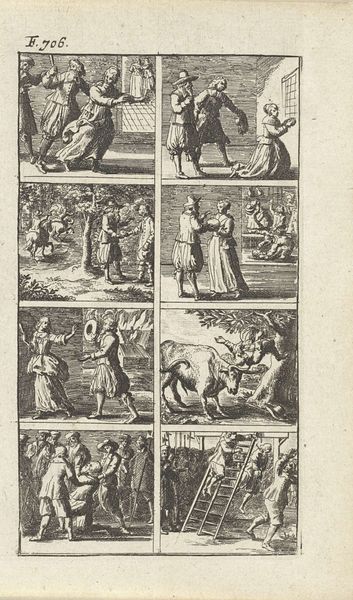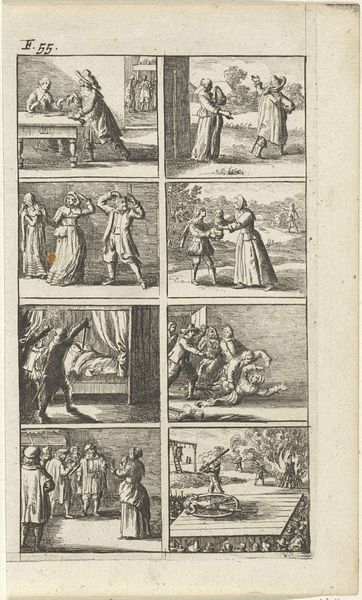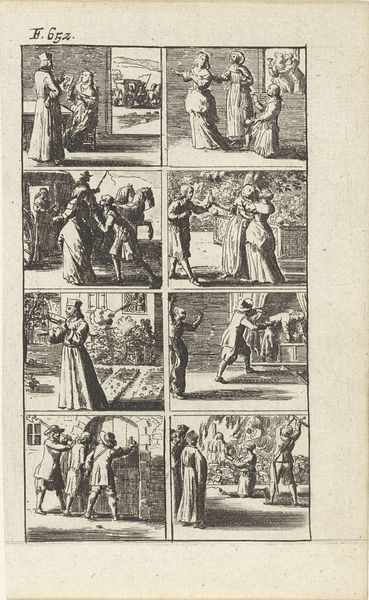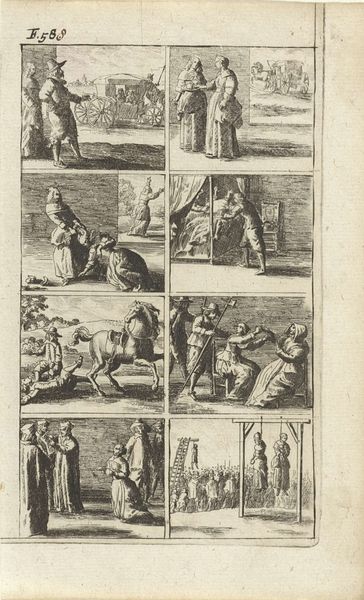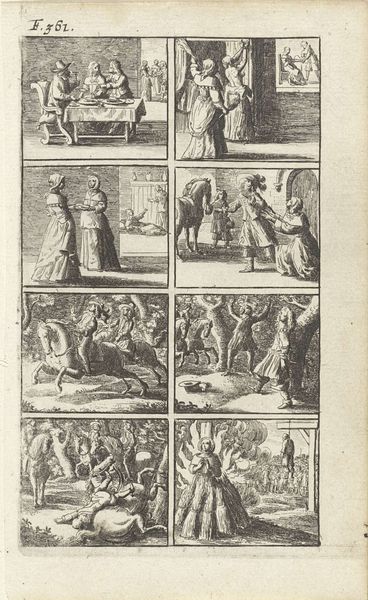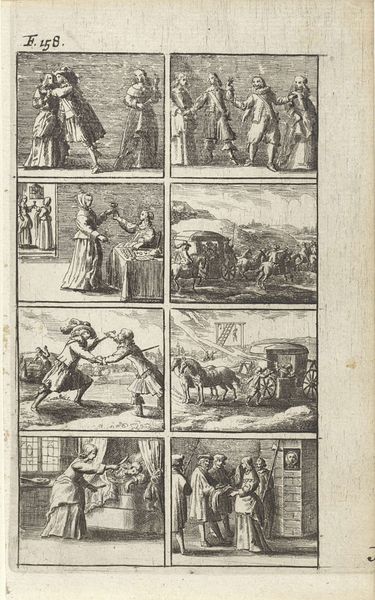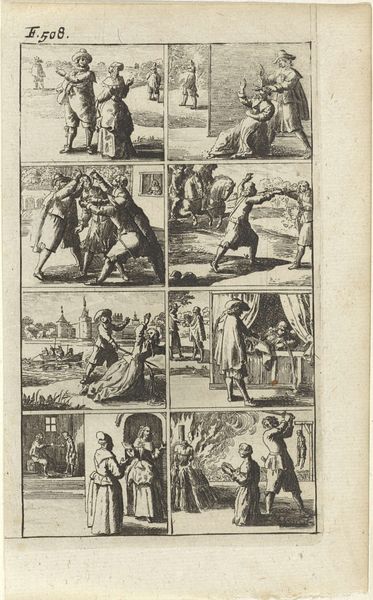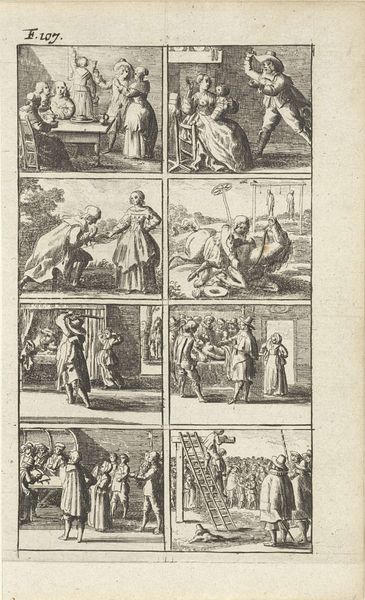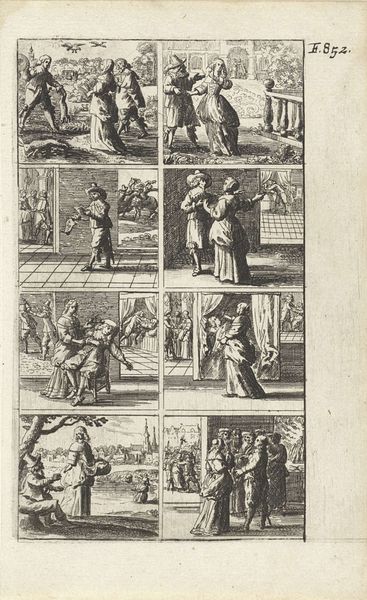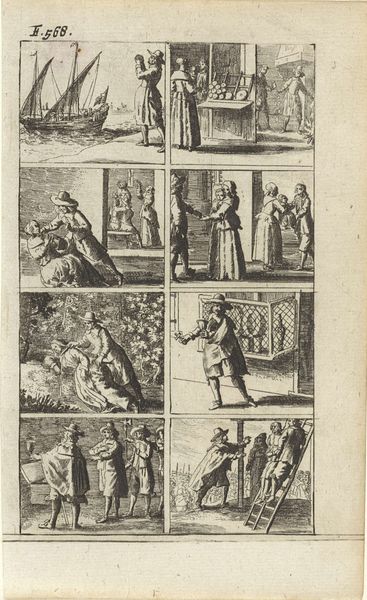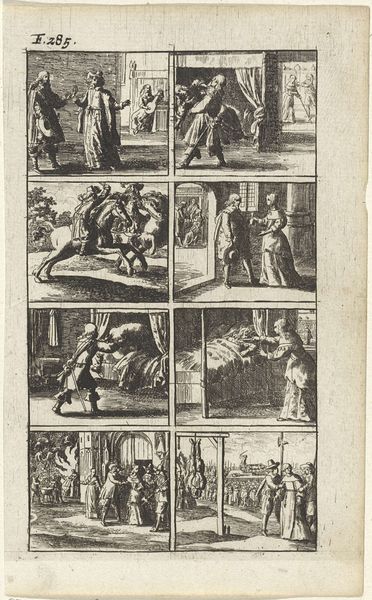
Verhaal met voorstellingen van moord en doodstraf (F. 29.) 1667
0:00
0:00
abrahamdirckszsantvoort
Rijksmuseum
print, engraving
#
comic strip sketch
#
quirky sketch
#
narrative-art
#
dutch-golden-age
#
mechanical pen drawing
# print
#
sketch book
#
figuration
#
personal sketchbook
#
sketchwork
#
pen-ink sketch
#
sketchbook drawing
#
genre-painting
#
history-painting
#
storyboard and sketchbook work
#
sketchbook art
#
engraving
Dimensions: height 155 mm, width 94 mm
Copyright: Rijks Museum: Open Domain
Abraham Dircksz. Santvoort created this engraving, titled "Story with scenes of murder and capital punishment", sometime in the mid-17th century. The symbolism of violence, particularly in the form of execution, resonates deeply within our cultural memory. In the lower register, notice the gallows. This motif, stark and imposing, carries a weight of collective trauma. The gallows, as a symbol, appears across epochs and cultures. Think of the Roman cross or medieval depictions of public hangings; they serve not only as instruments of death but also as potent symbols of power and social control. In Santvoort's image, the gallows is not merely a device for execution. It’s a stage upon which societal anxieties and moral boundaries are played out. Consider how this symbol has evolved through art and history. From the heroic deaths in classical tragedies to the stark realities captured in news photography, the imagery of execution continues to evoke powerful emotional and psychological responses, engaging us on a deep, subconscious level. This non-linear, cyclical progression of the gallows reflects how it resurfaces, evolves, and takes on new meanings throughout history.
Comments
No comments
Be the first to comment and join the conversation on the ultimate creative platform.
